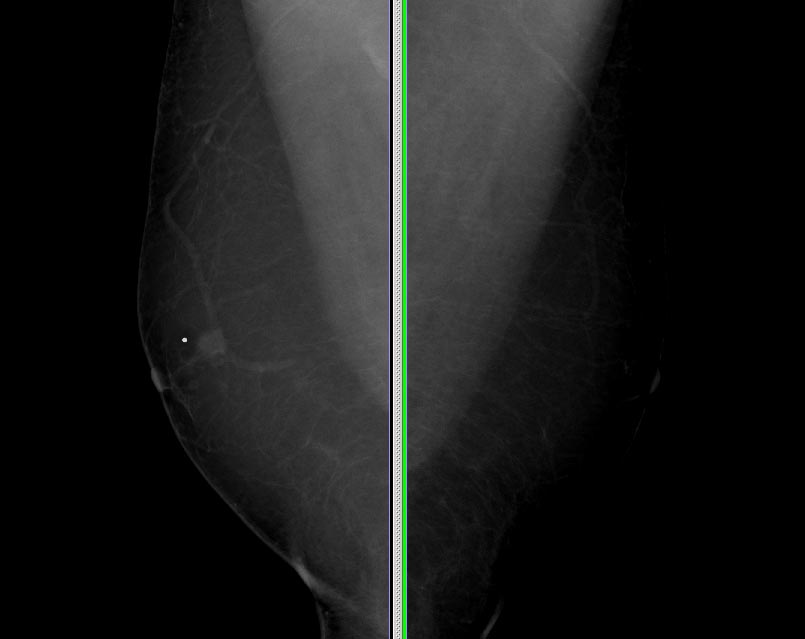
Male breast cancer is considerably less common than breast cancer in females. For every male diagnosed with breast cancer, there will be approximately 100 females diagnosed with the condition. Due to its rarity, routine screening mammograms are not recommended for men at any age. The diagnosis of breast cancer in males primarily focuses on evaluating breast lumps. As there are multiple causes of male breast lumps (most of which are benign), it is essential for both physicians and patients to understand the significance of lumps or new symptoms, such as nipple discharge or pain in the male breast.
Understanding Male Breast Lumps by Age Group
Teens
The importance of a male breast lump is largely related to the patient's age. Breast lumps are common in teenage and adolescent males, usually due to hormonal changes. These lumps, referred to as gynecomastia, generally resolve on their own. Pediatricians often monitor these lumps, but if there are unusual physical characteristics, cosmetic concerns, or concerns from parents or patients, a referral to a breast surgeon may be necessary. In select cases, surgical removal of the lump is appropriate. Testicular examinations are also performed to rule out testicular tumors in this age group.
Ages 20-40
For males in the 20-40 age group, breast lumps are usually benign, but testicular cancer is a significant concern as its peak incidence occurs within this age range. It's important to note that testicular cancers can produce chemicals that cause breast enlargement. Therefore, when males in this age group present with lumps in one or both breasts, the possibility of testicular cancer is carefully considered.
A physician performs a testicular examination, and if any abnormalities are found, an ultrasound of the testicles is conducted. If the testicular examination reveals no concerns, blood tests are ordered to evaluate the possibility of hidden or occult testicular cancer (currently, a beta-HCG and an alpha-feto protein test are utilized). If these tests are negative, the patient is advised to perform regular testicular and breast examinations and report any changes.
If the testicular examination is normal, the breast lump is then evaluated. In most cases, breast lumps in this age group are due to medication or an unknown cause. Male breast cancer in this age group is rare, but it remains a possibility.
Most cases of gynecomastia in this age group present as a flat, rubbery, smooth, central breast mass. Male breast cancers are typically hard, irregular in shape, and sometimes tender. If there are doubts about the diagnosis, a mammogram and a core needle biopsy are performed.
Even if a biopsy is benign, these patients are followed for at least one year. If a medication associated with gynecomastia is identified, the referring doctor is consulted to explore alternative medications. Gynecomastia is increasingly observed in young males taking body-building products, and in most cases, breast enlargement resolves when the medications are discontinued.
For benign gynecomastia cases, the patient is followed and reassured that tenderness usually subsides, and the lump often becomes less noticeable. If there are cosmetic concerns or the lump is bothersome, the enlarged breast tissue is removed, with the majority of patients expecting excellent cosmetic results.
Ages over 40
Breast cancer is most commonly detected in men between the ages of 60 and 70, which raises concerns about unexplained male breast lumps occurring after the age of 40. Generally, the evaluation of patients in this age group is similar to that of the 20-40 age group.
However, for those over 40, medications are more frequently the cause of breast enlargement, and cancer is more prevalent in this age group. As a result, in addition to the standard evaluation, these patients typically undergo a diagnostic mammogram and some form of biopsy. If a benign diagnosis is established, the patient is monitored conservatively. If the diagnosis is cancer, a standard mastectomy is usually performed.
Digital mammogram and male breast cancer:

Medications that may cause gynecomastia:
- Corticosteroids, such as prednisone.
- Anabolic steroids, often used for bodybuilding, and dietary supplements containing steroid compounds.
- Anti-ulcer medications (such as cimetidine).
- Antiepileptic medications (such as phenytoin [Dilantin]).
- Cardiac medications, including some calcium channel blockers and digoxin.
- Certain chemotherapy drugs (alkylating agents).
- Anti-androgen drugs (such as flutamide, finasteride, cyproterone, and spironolactone).
- Anti-anxiety and antidepressant medications (such as diazepam [Valium] and tricyclic antidepressants).
It is important to note that not all medications that cause gynecomastia will do so in all men. The risk of developing gynecomastia varies from person to person, and it is possible to take some of these medications without developing any symptoms.

